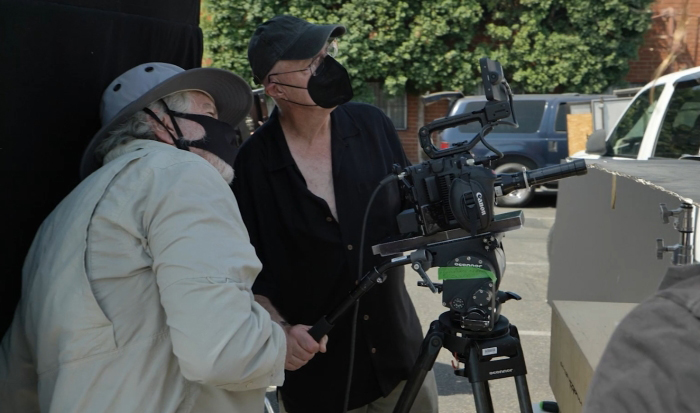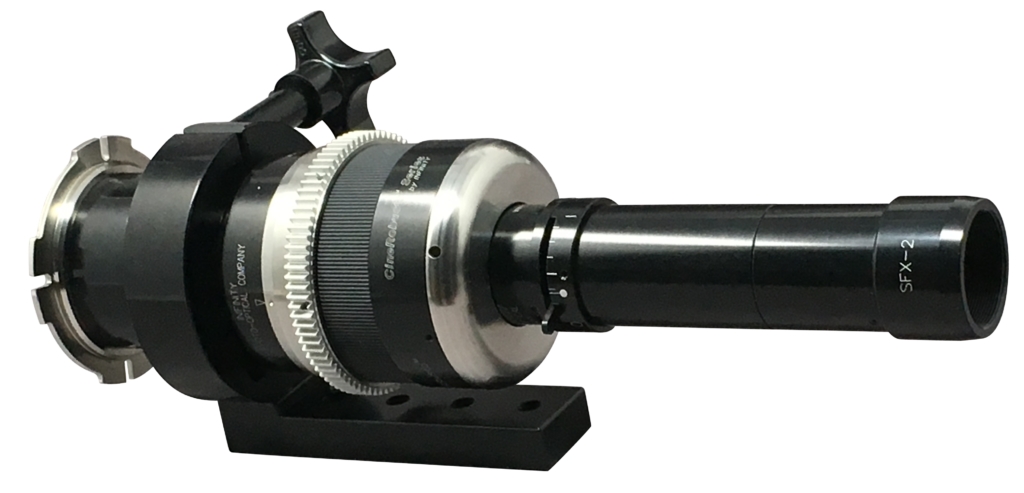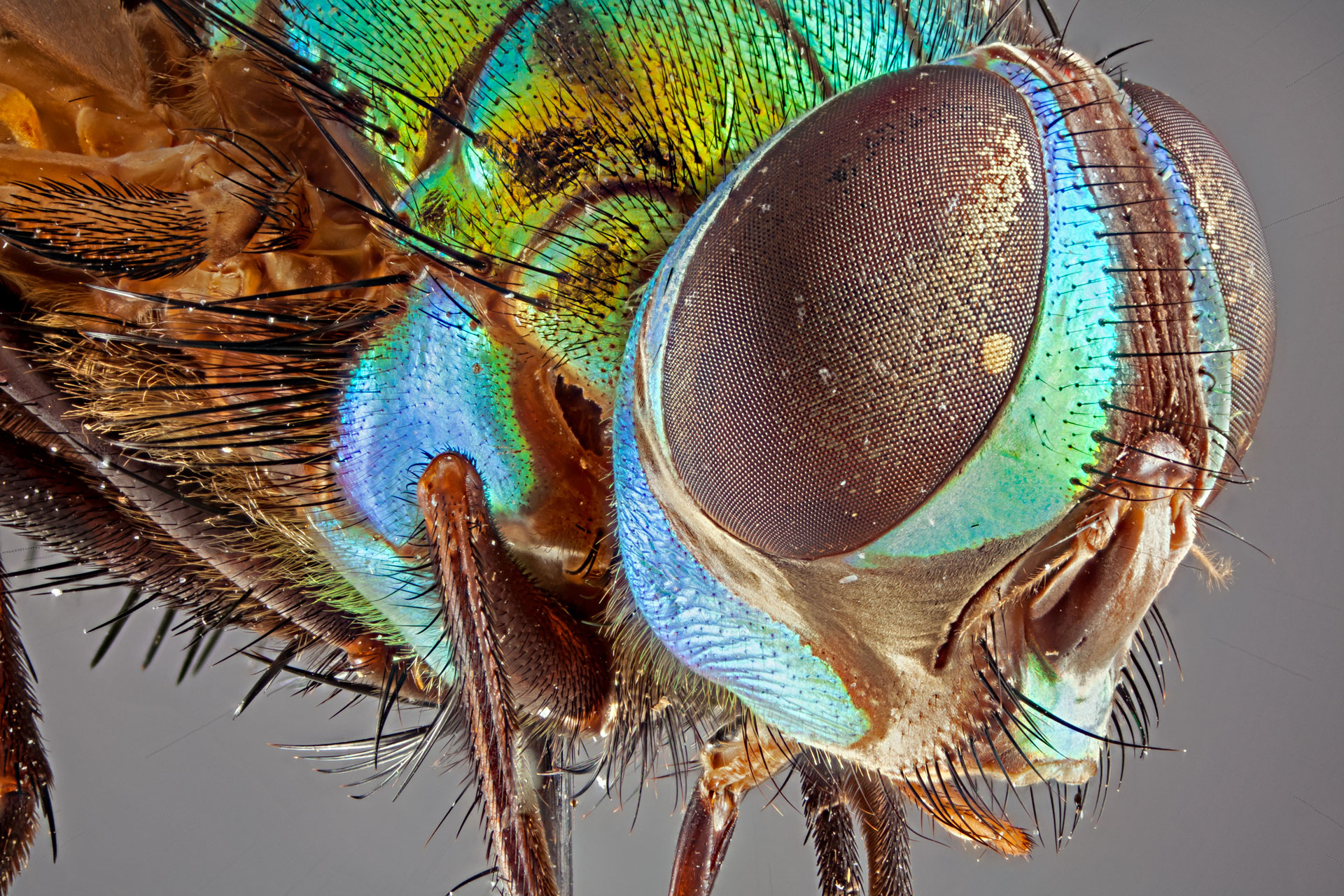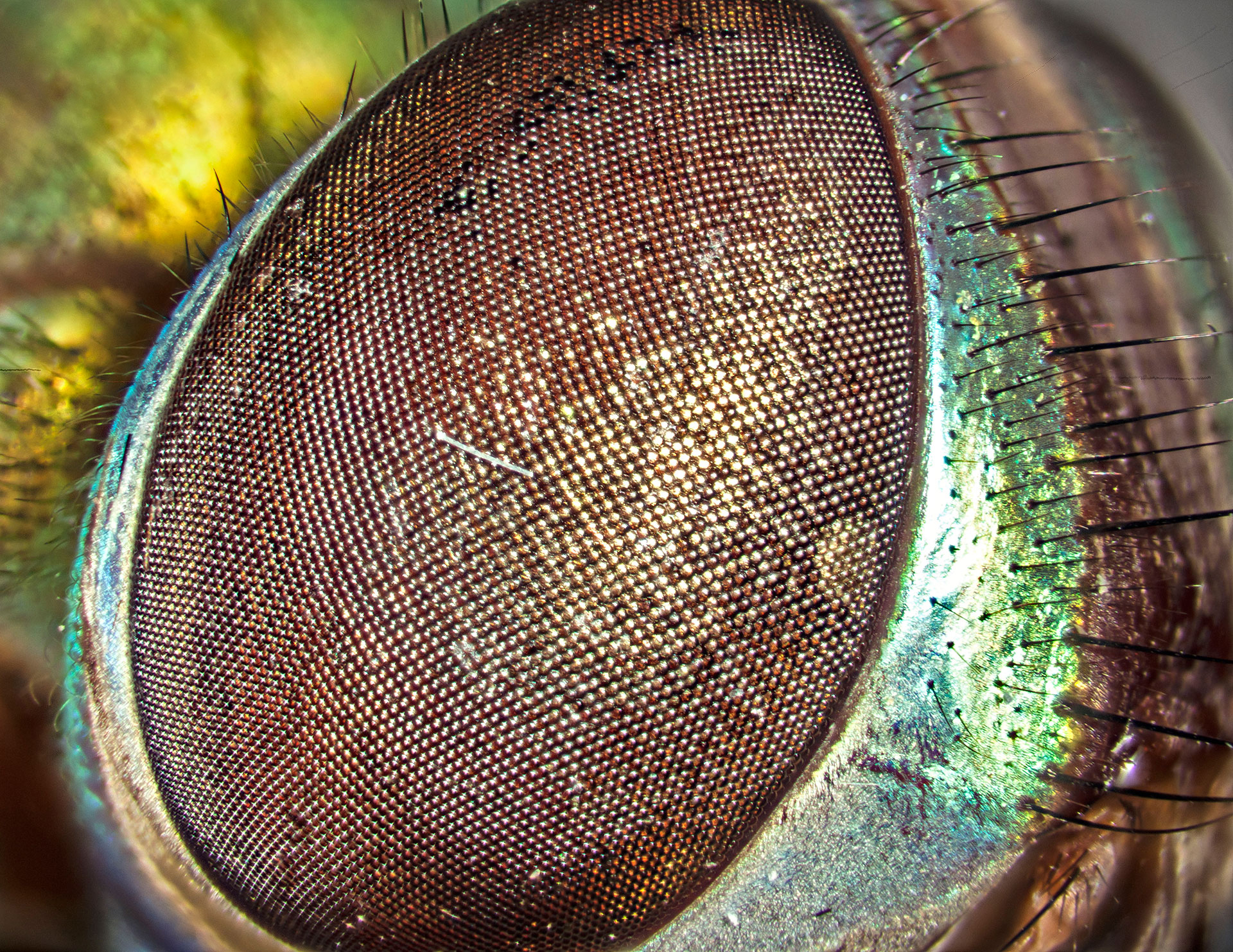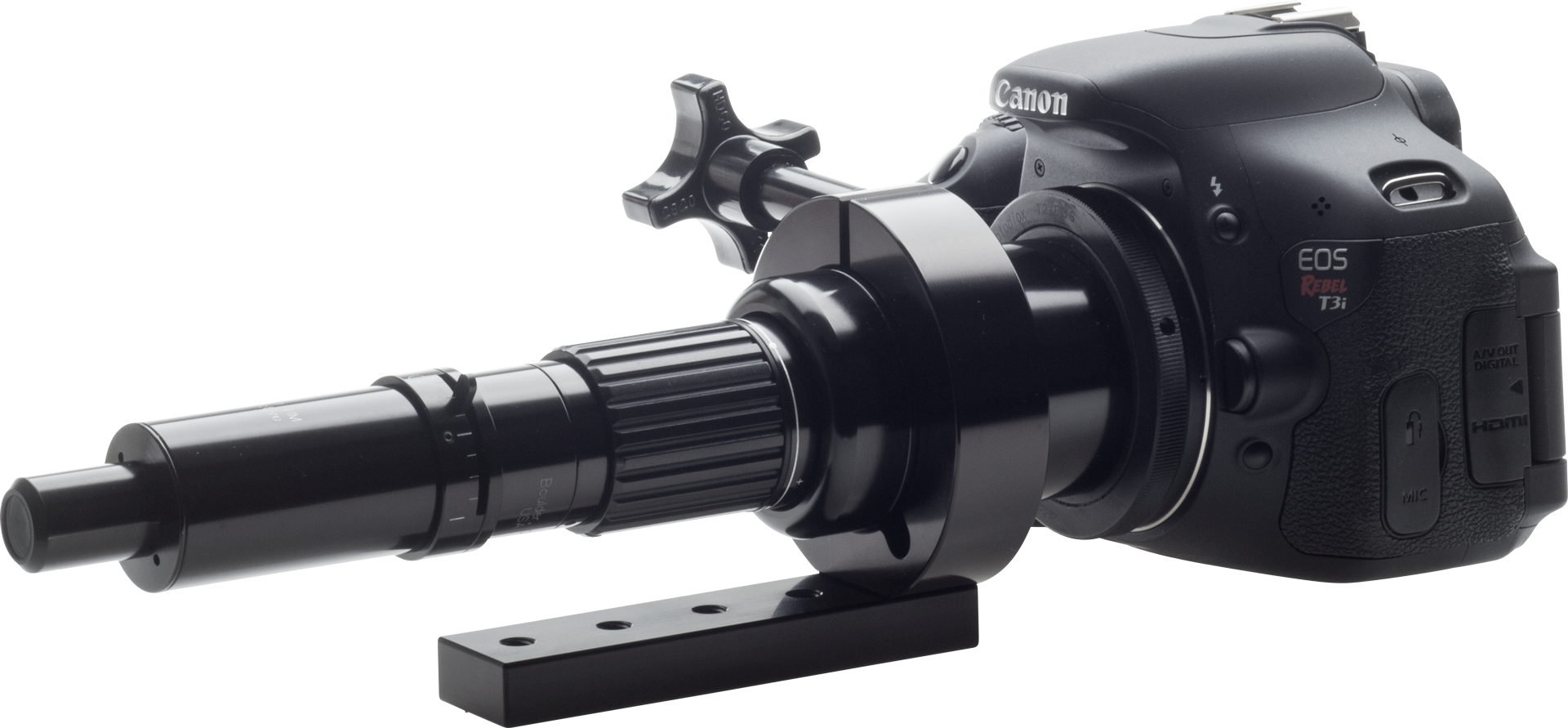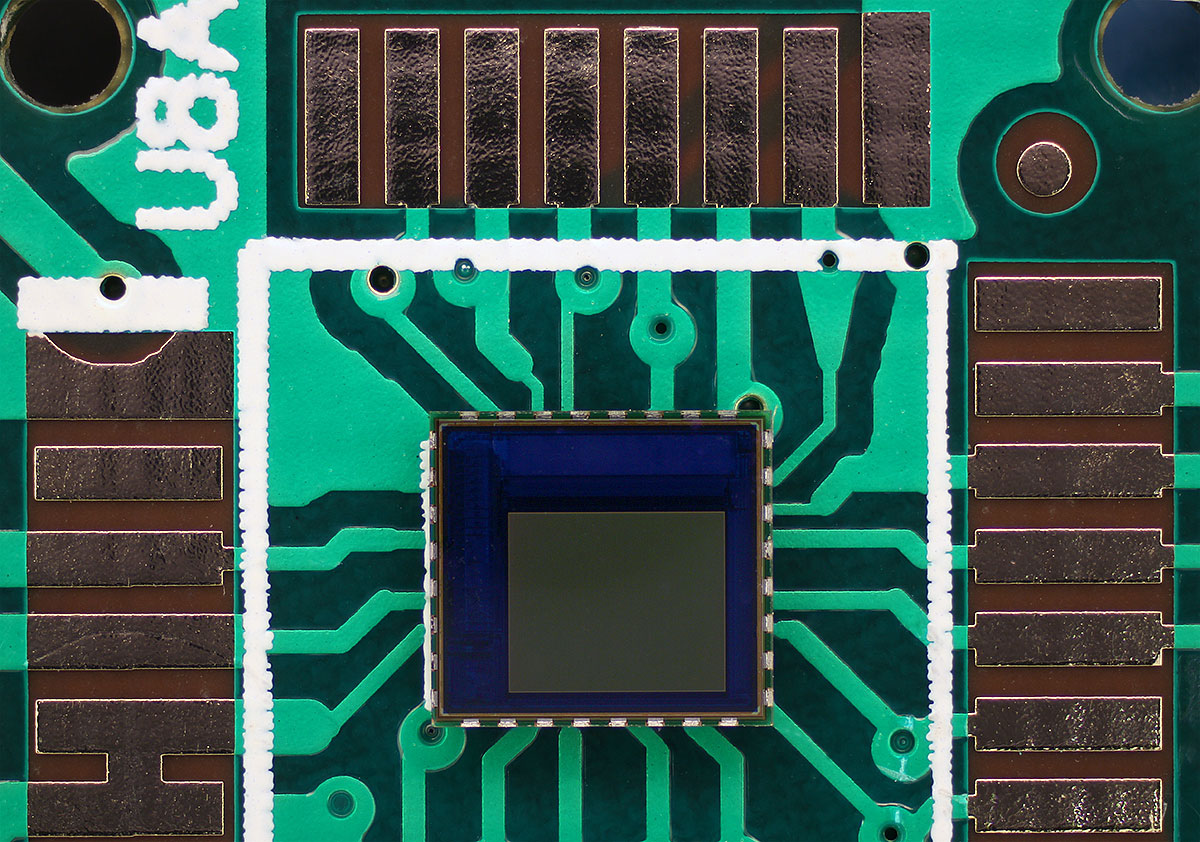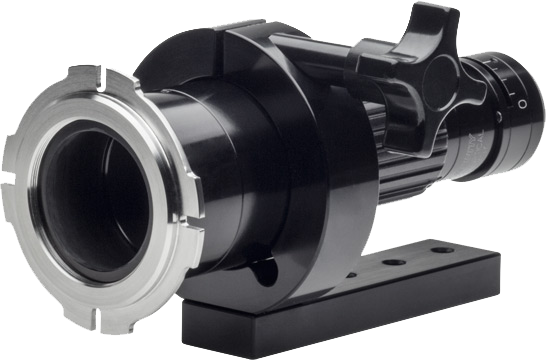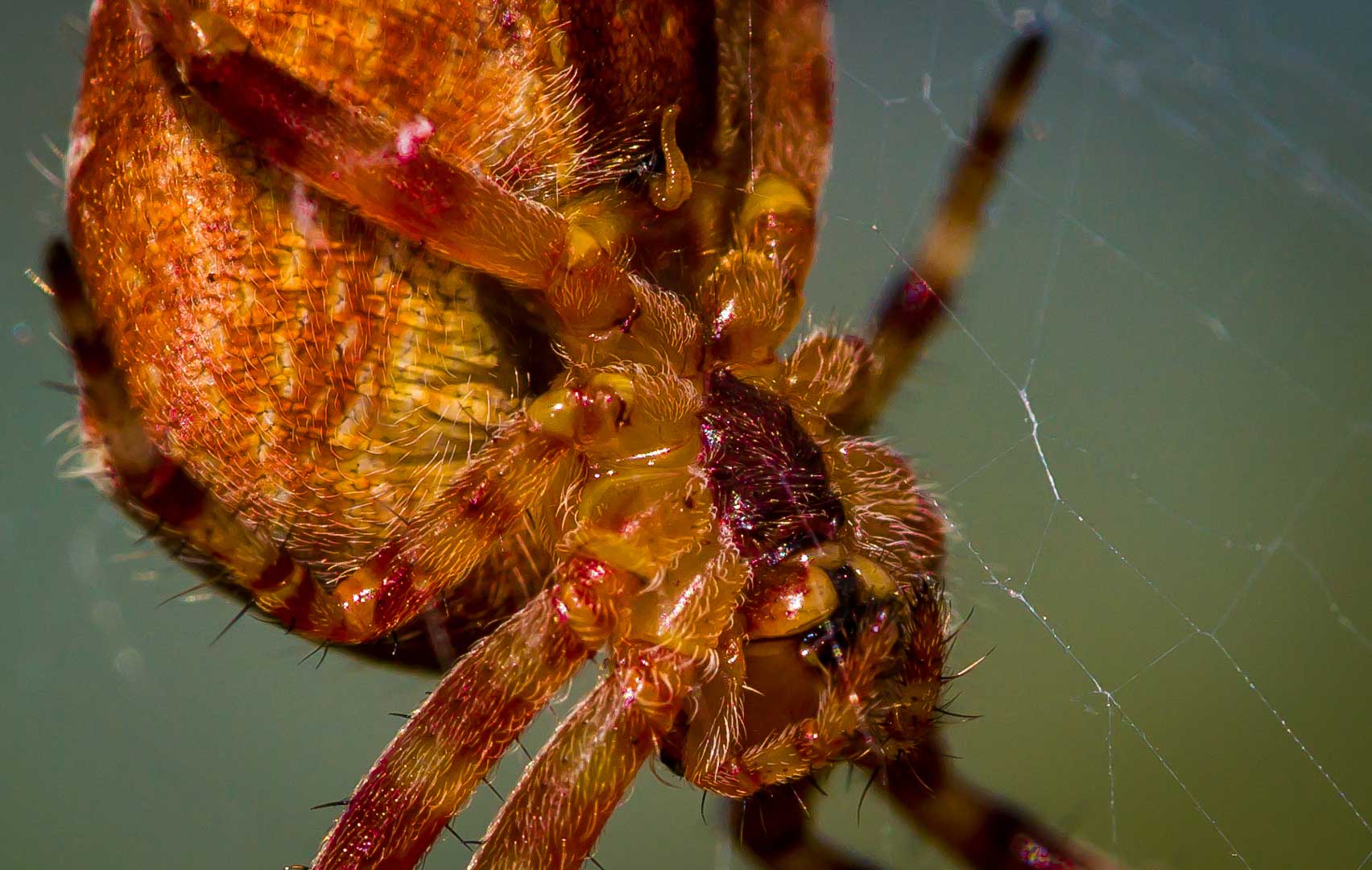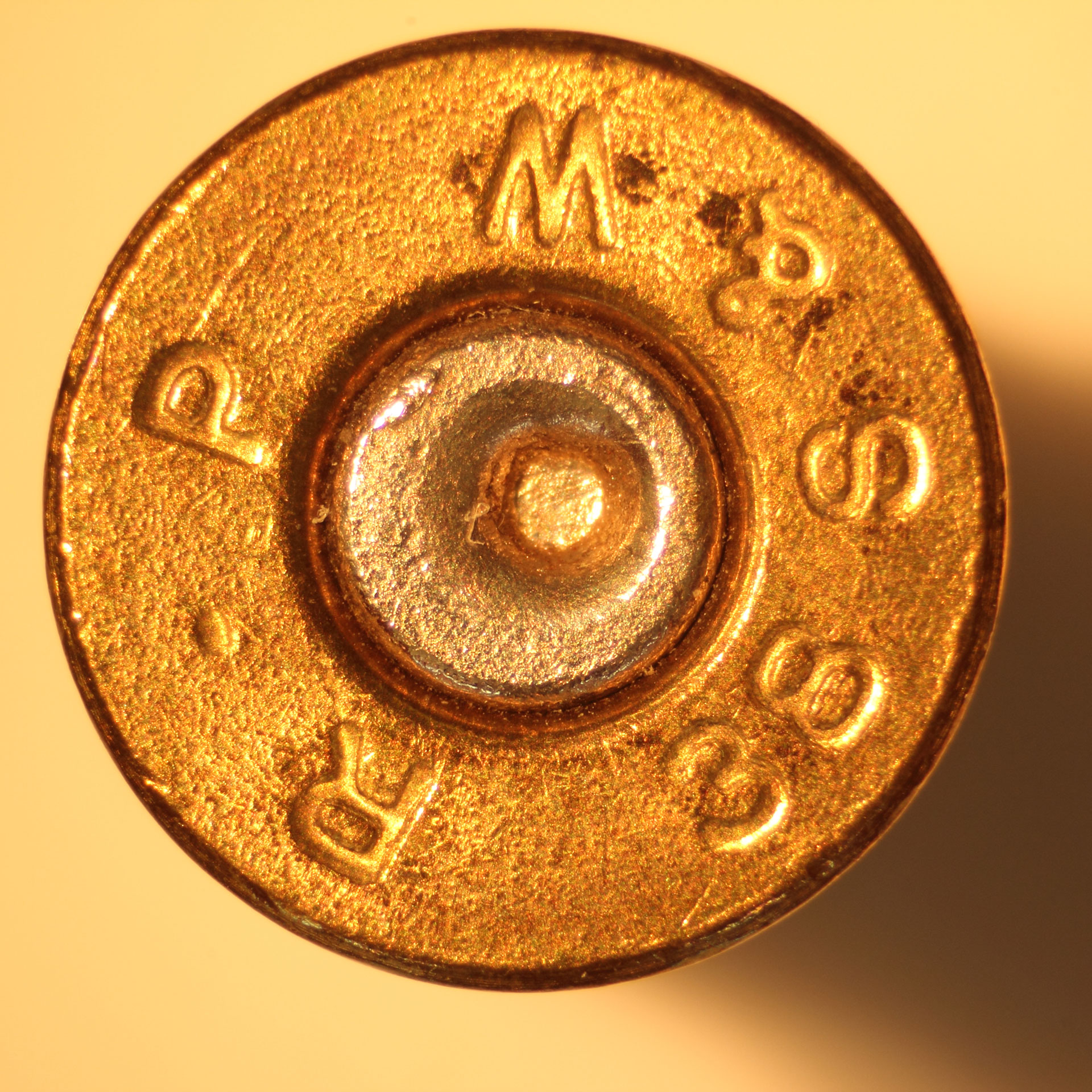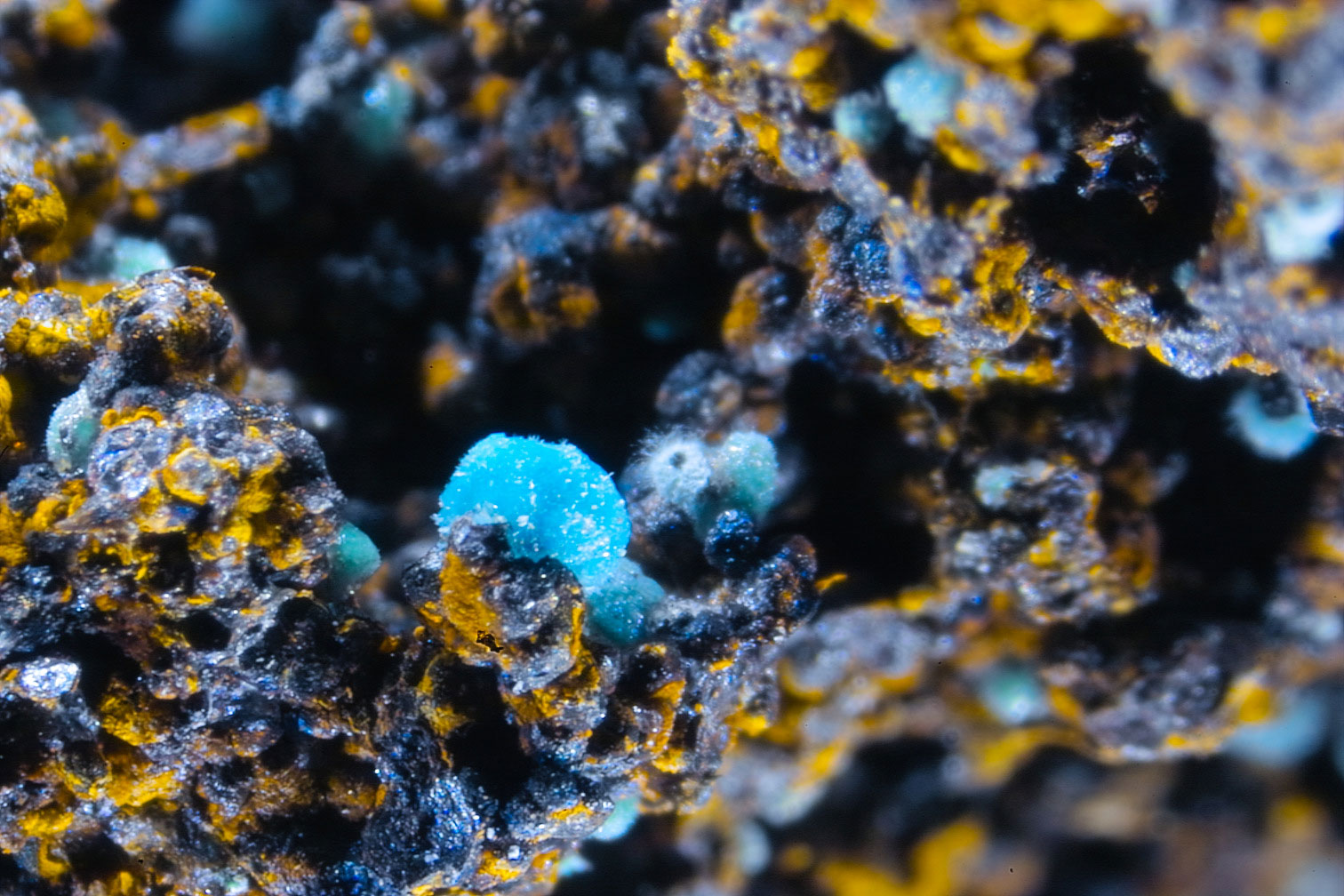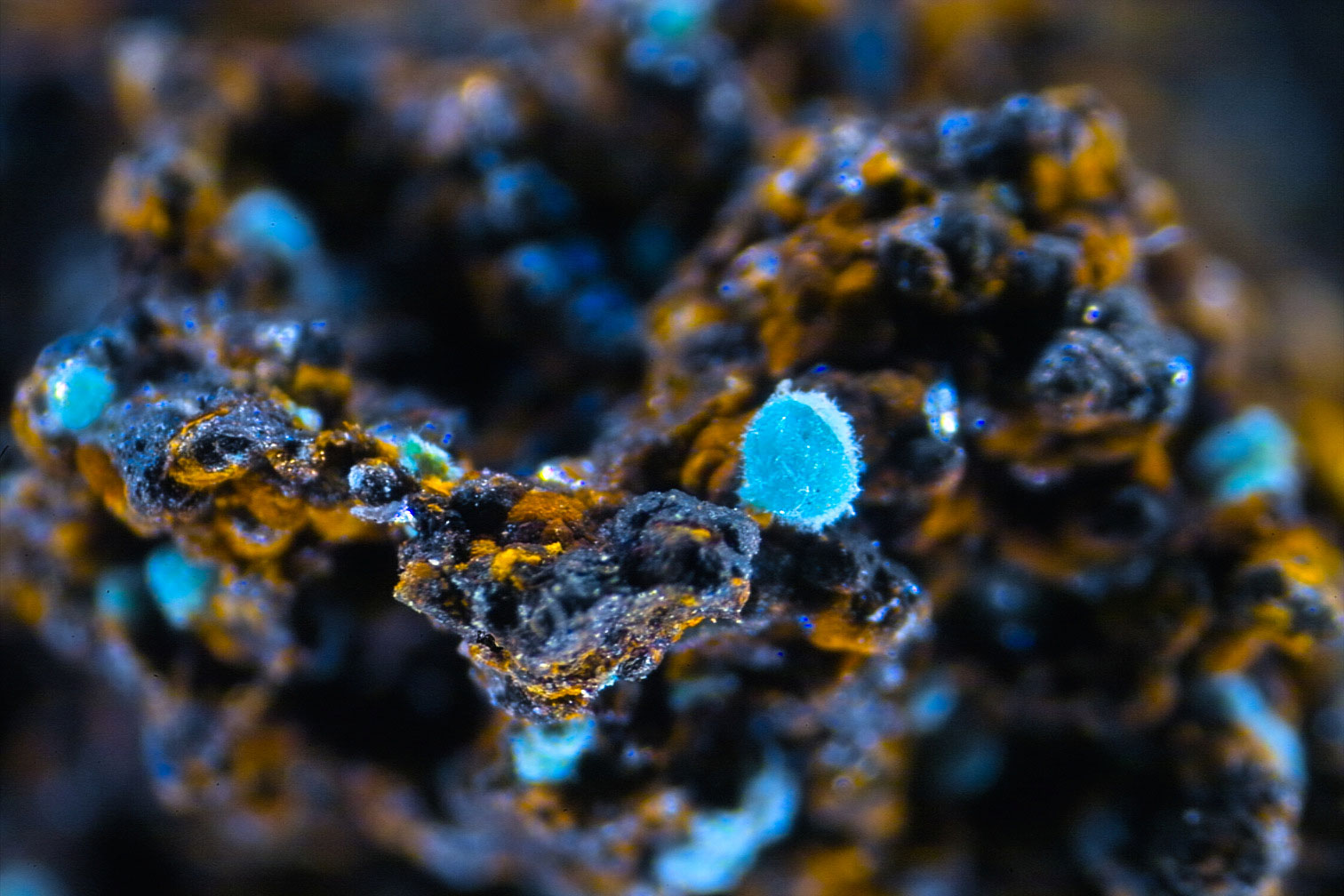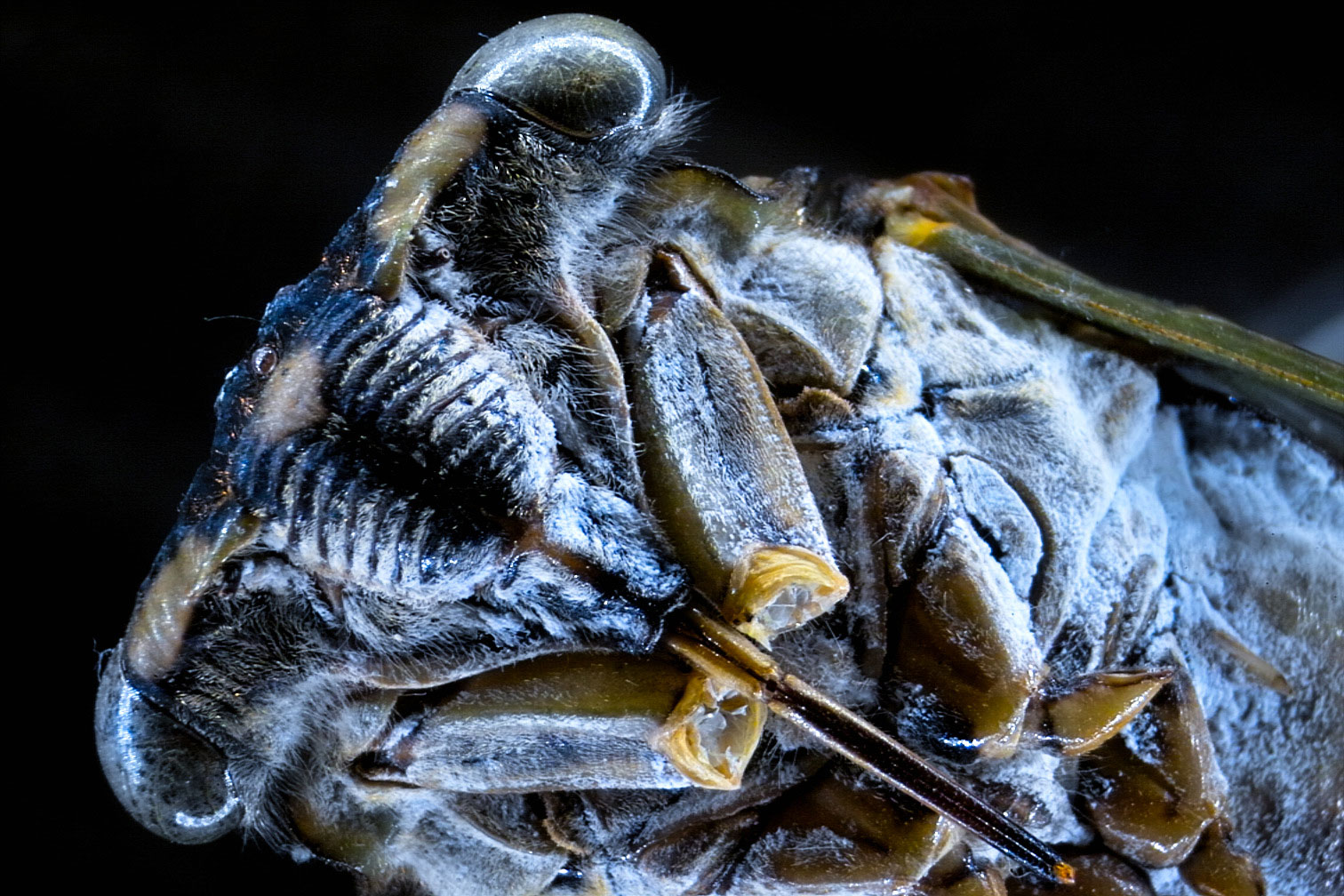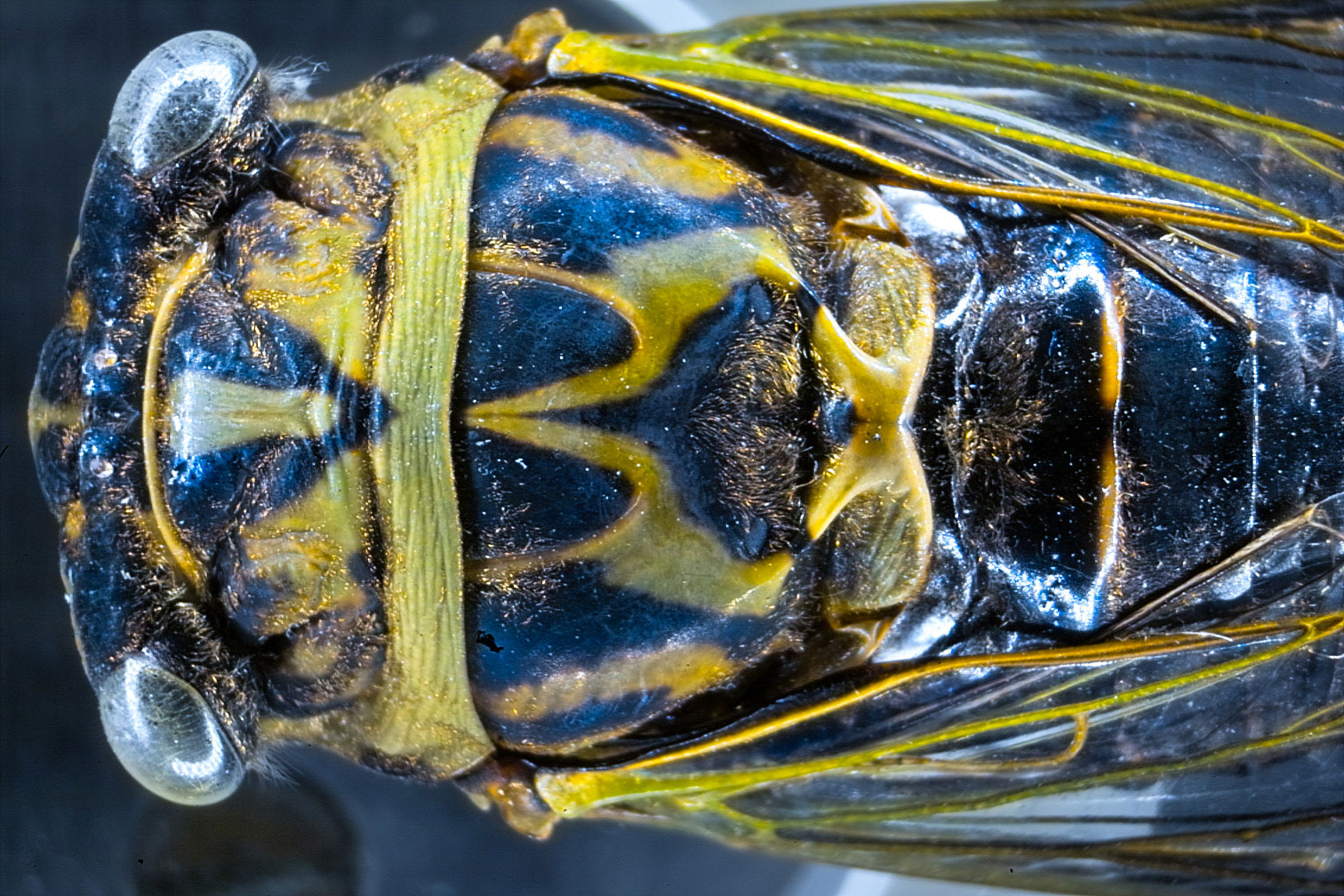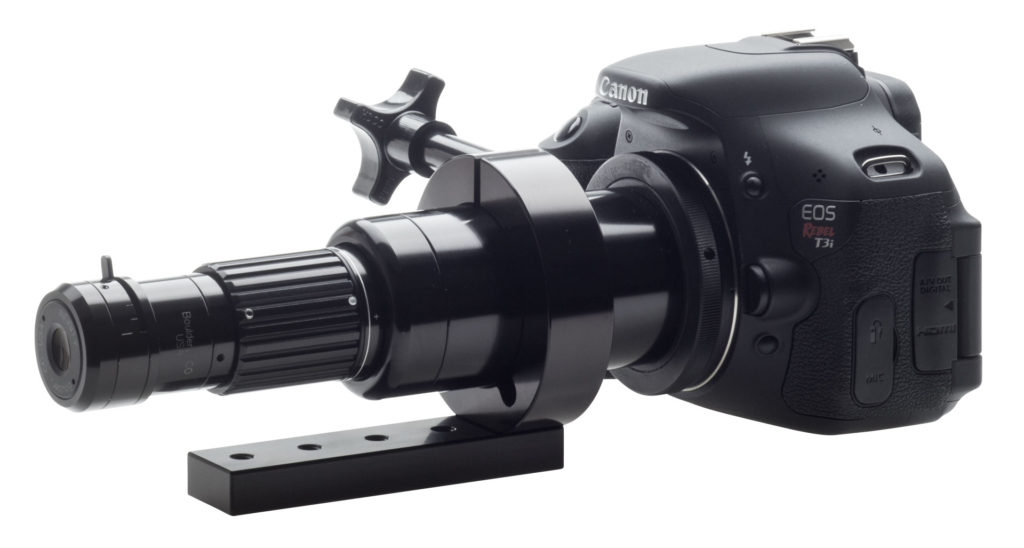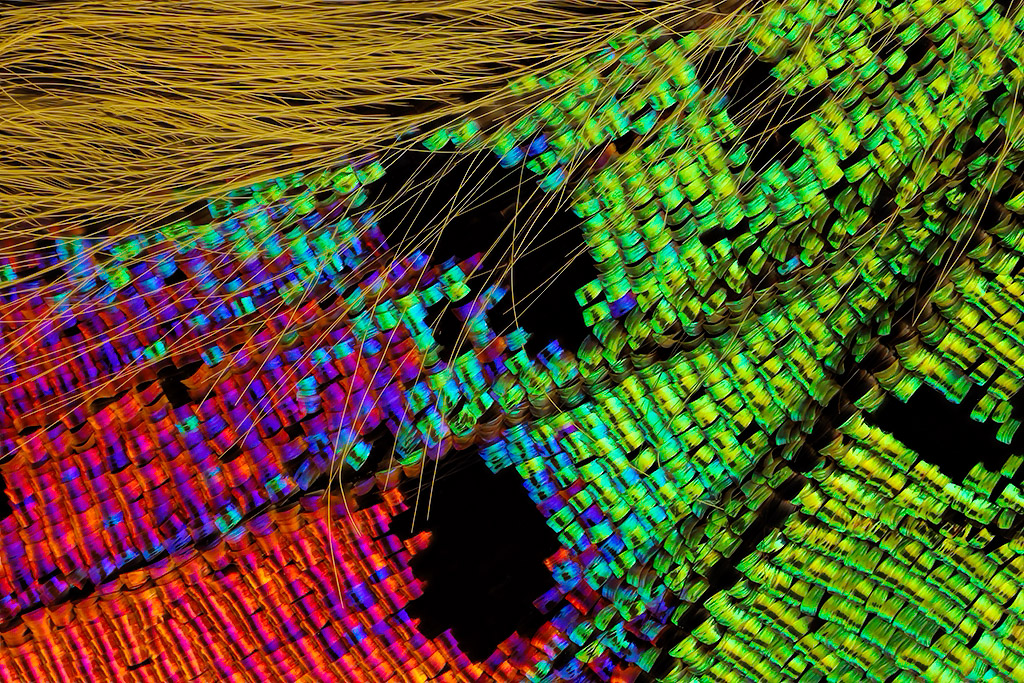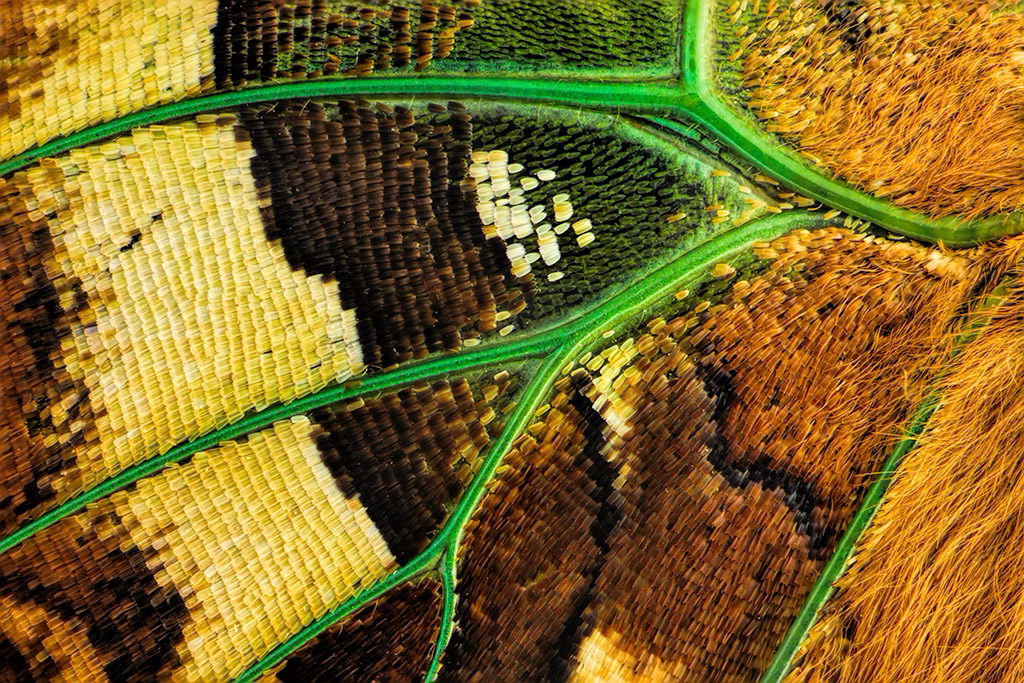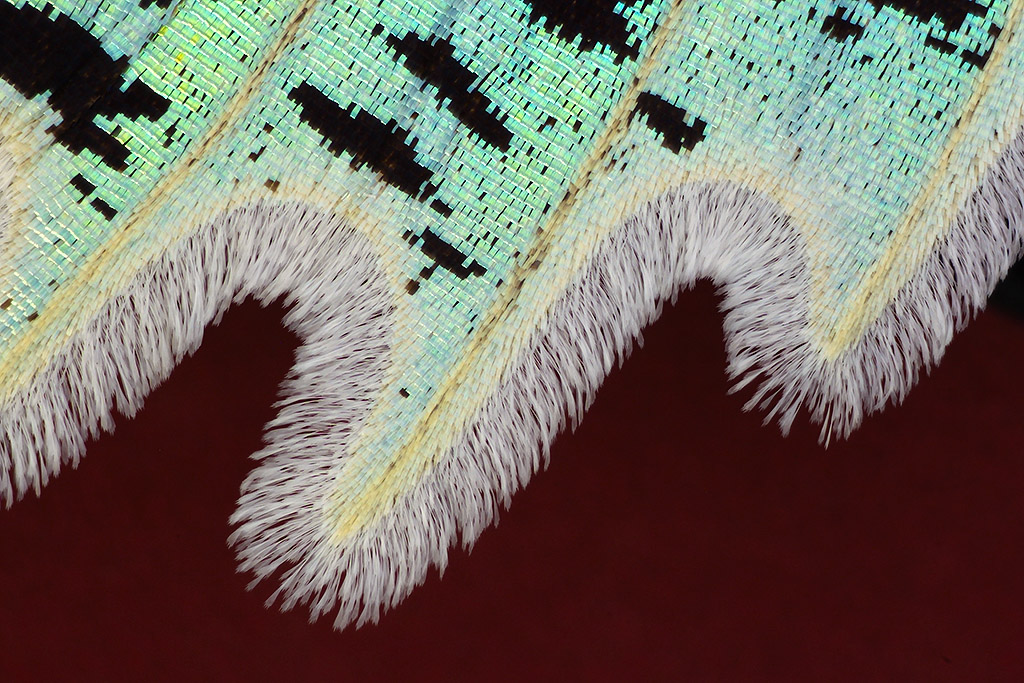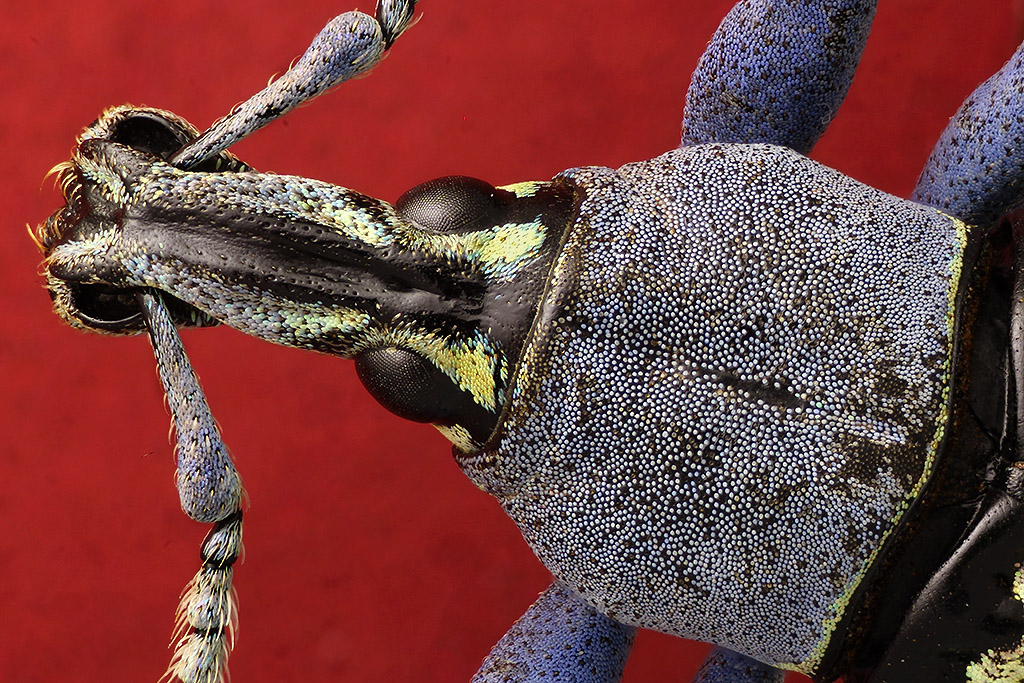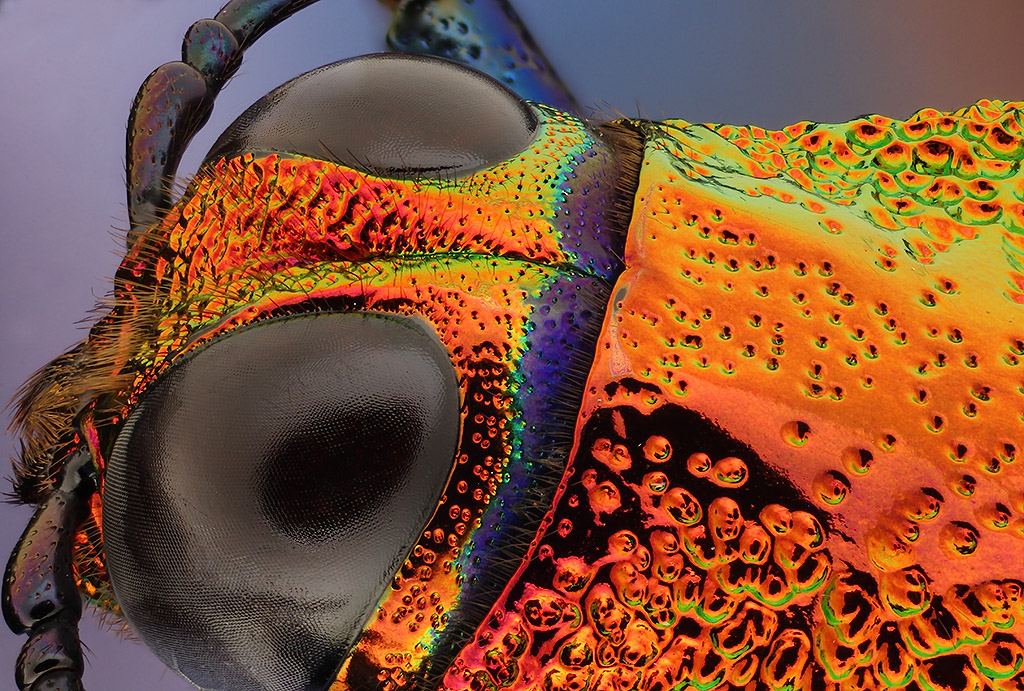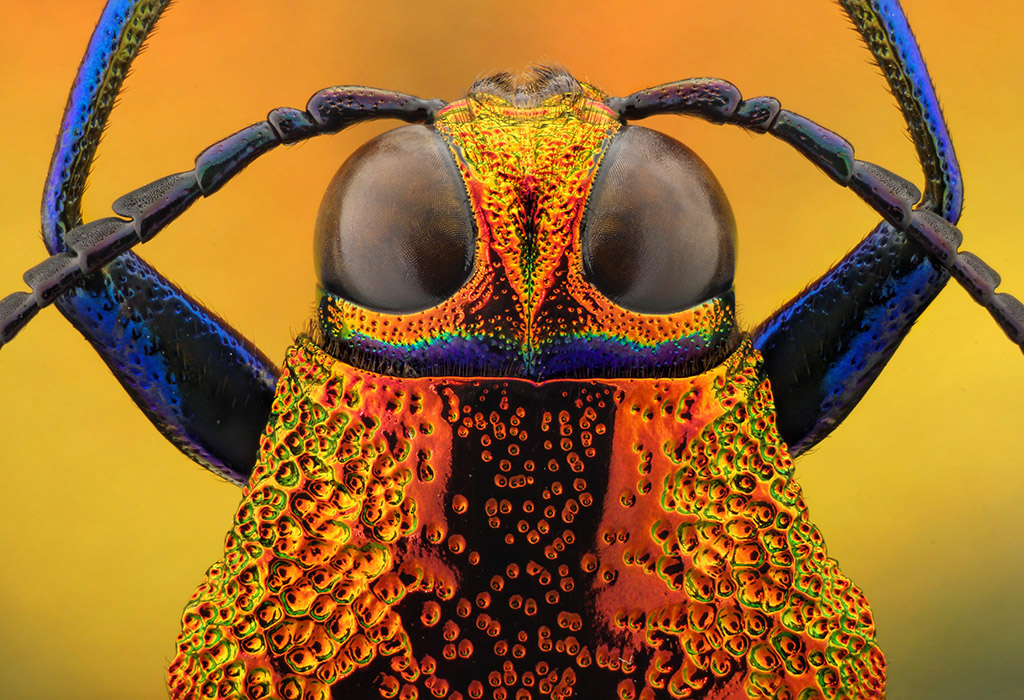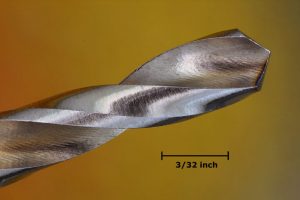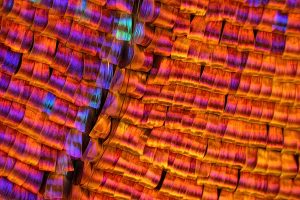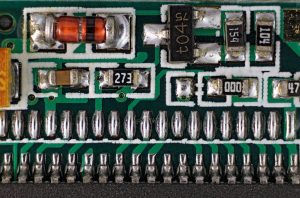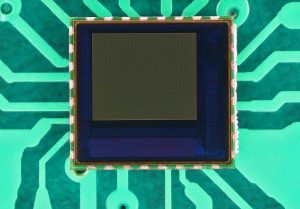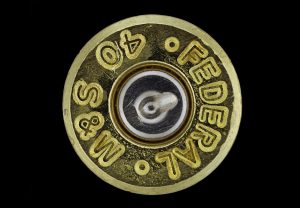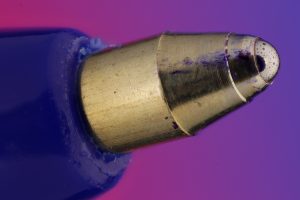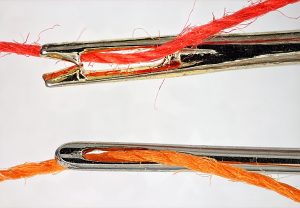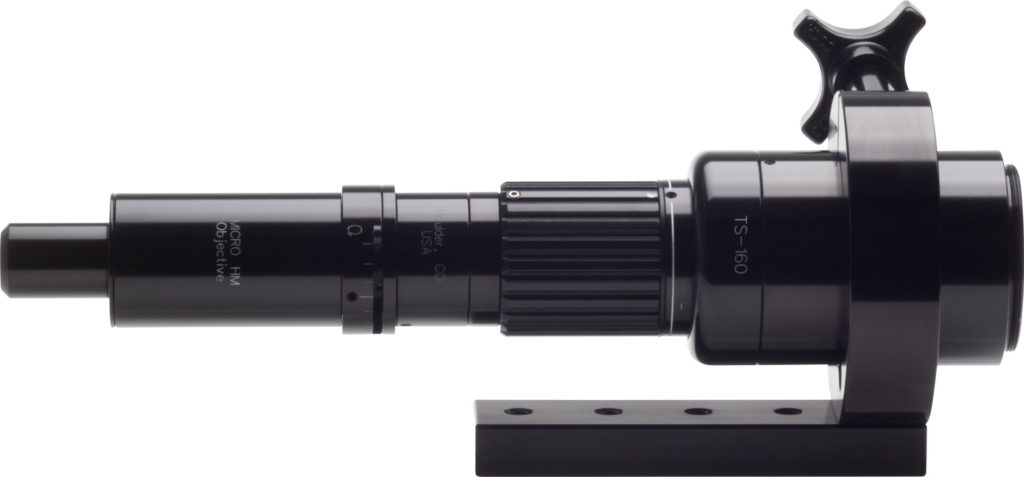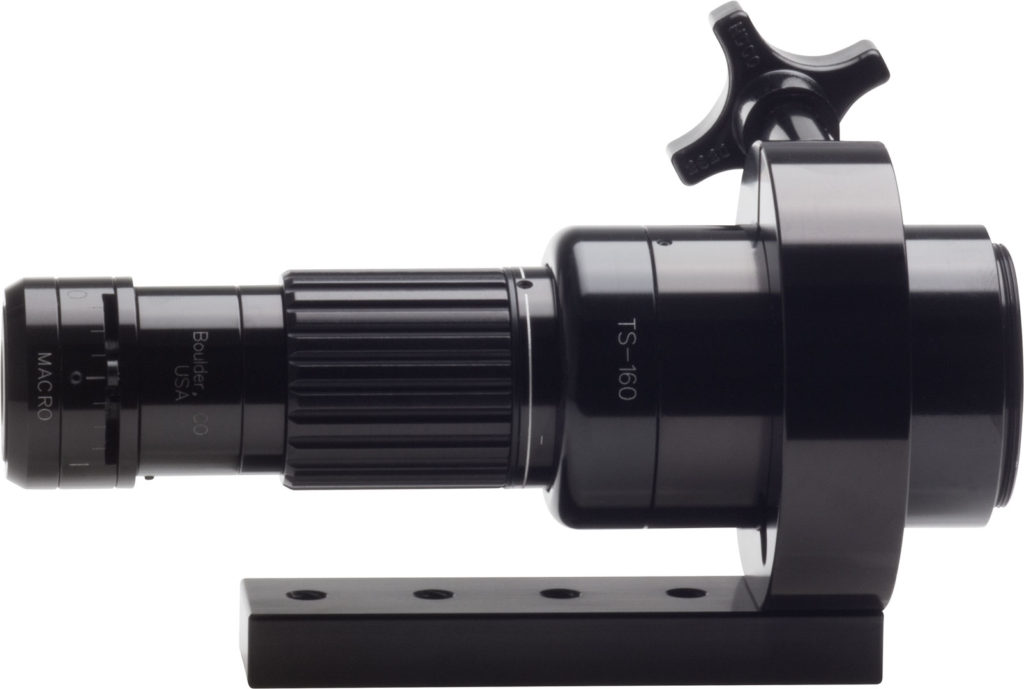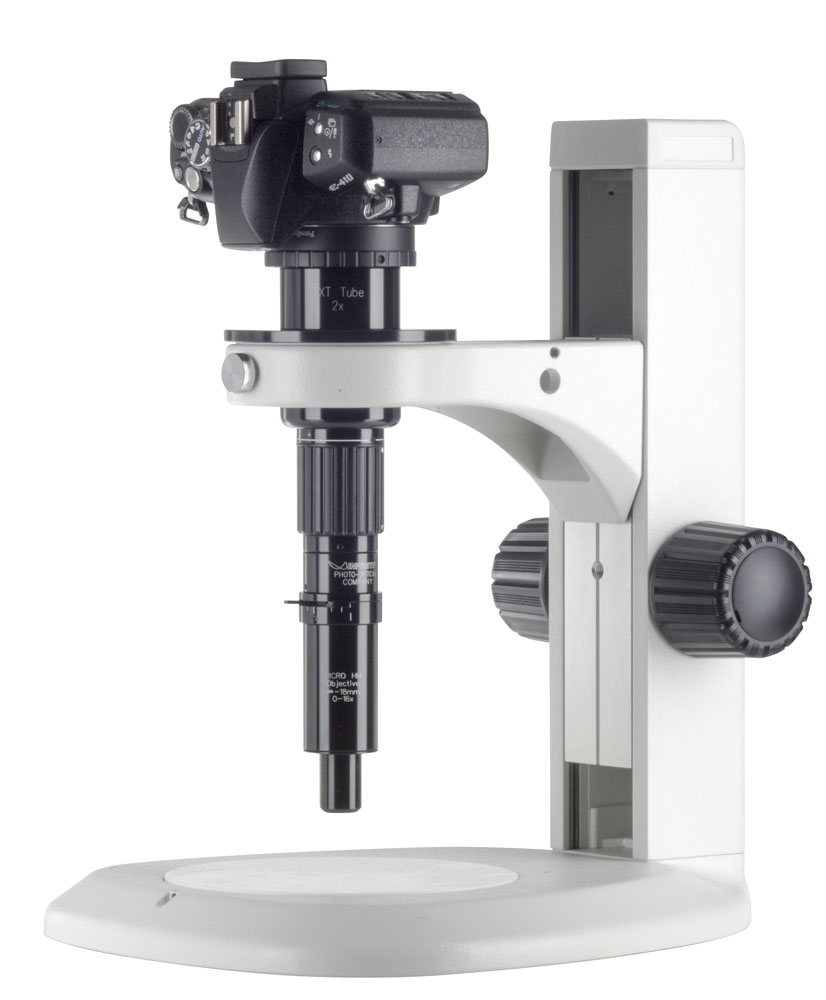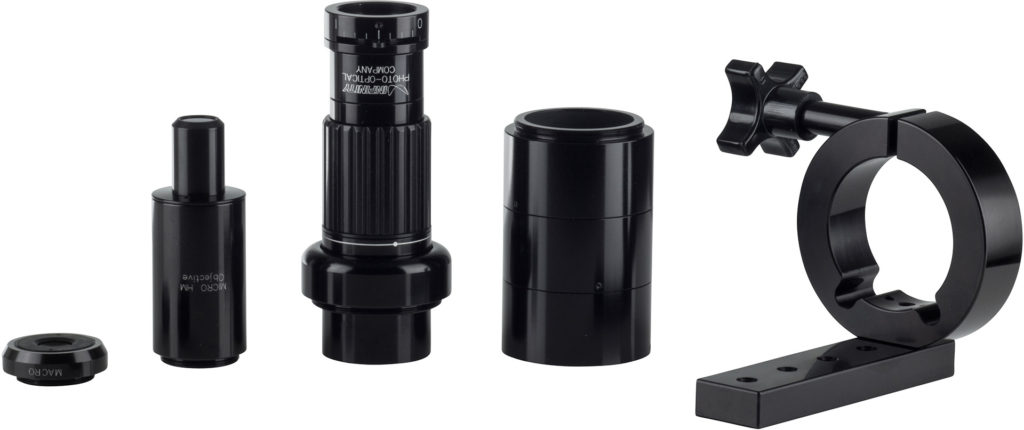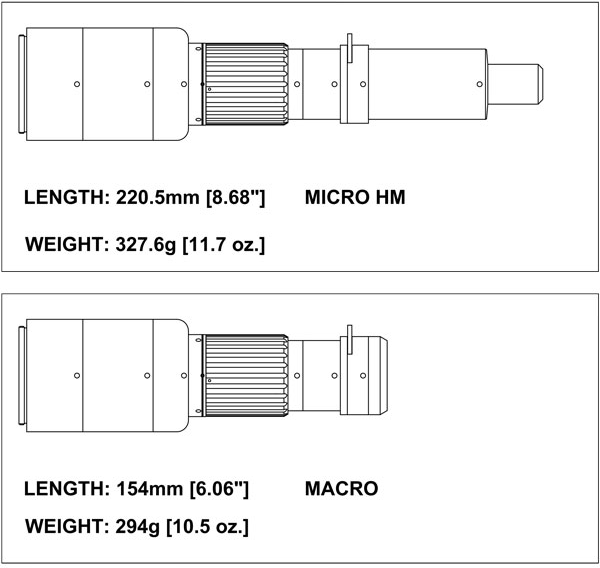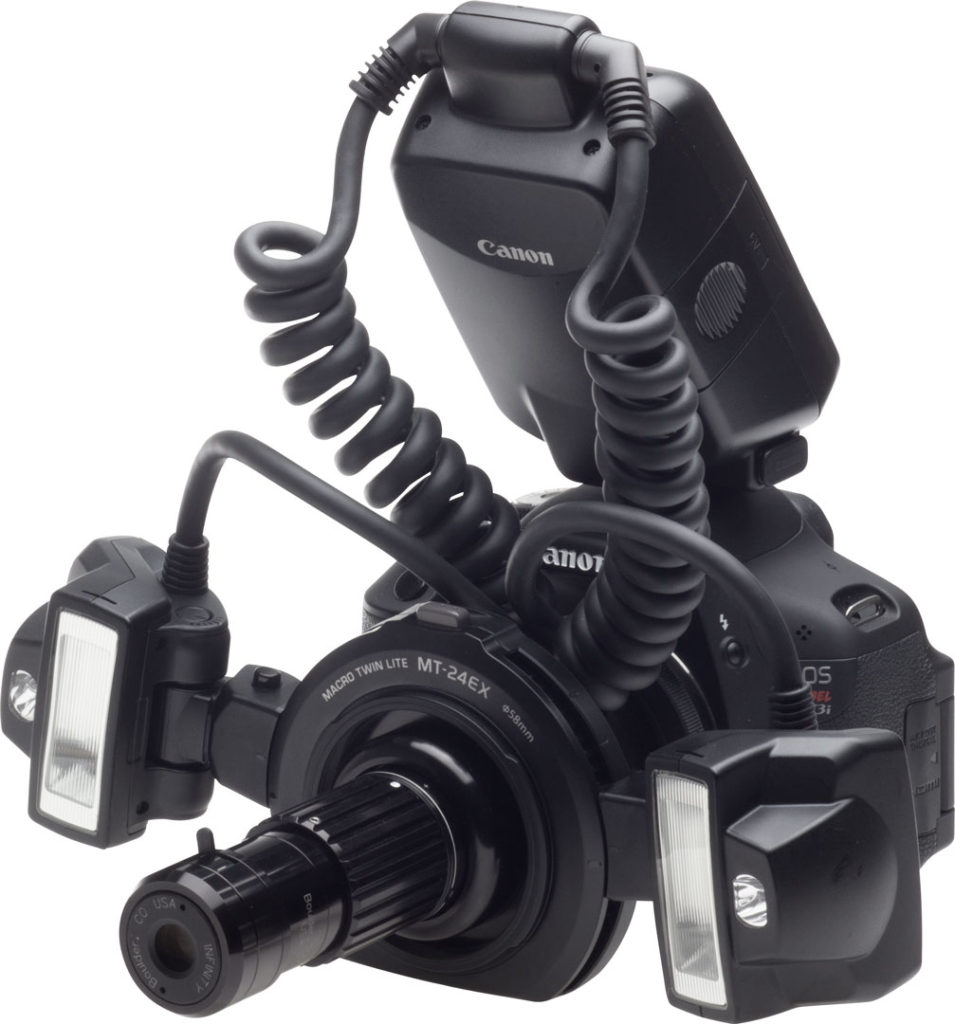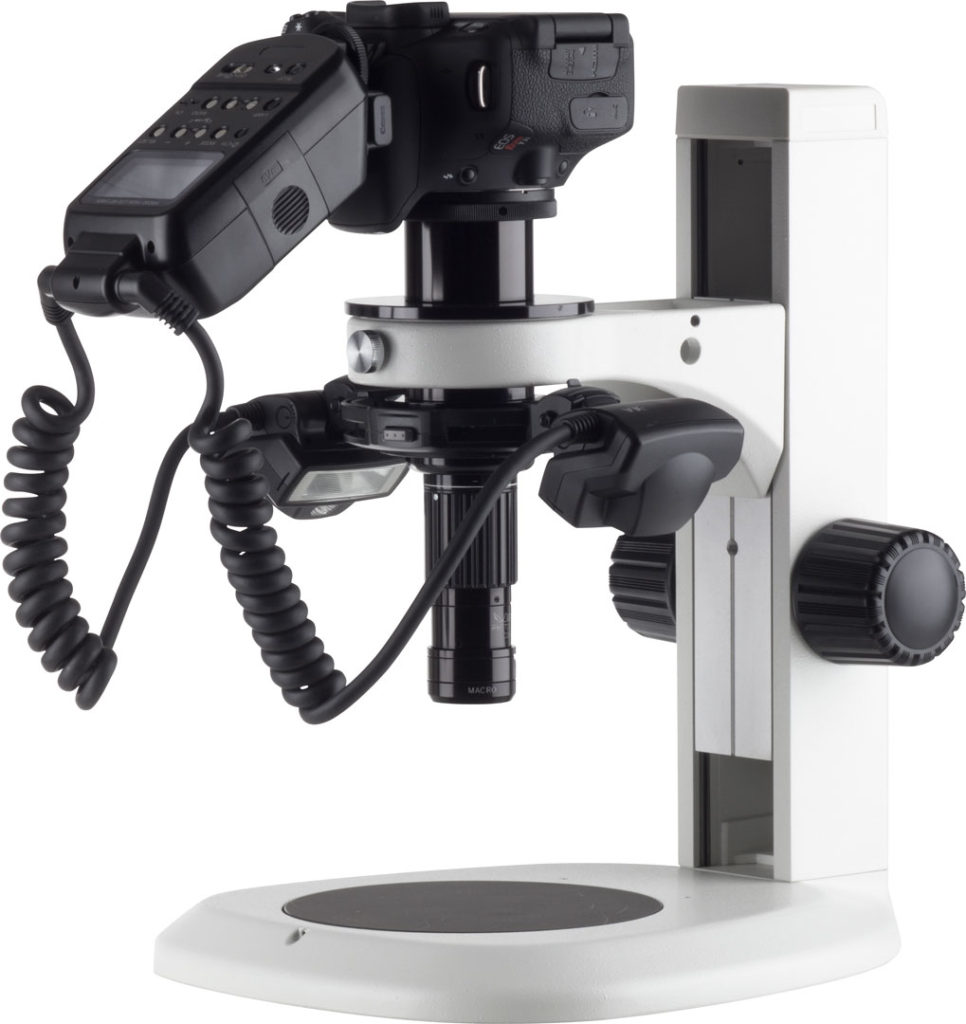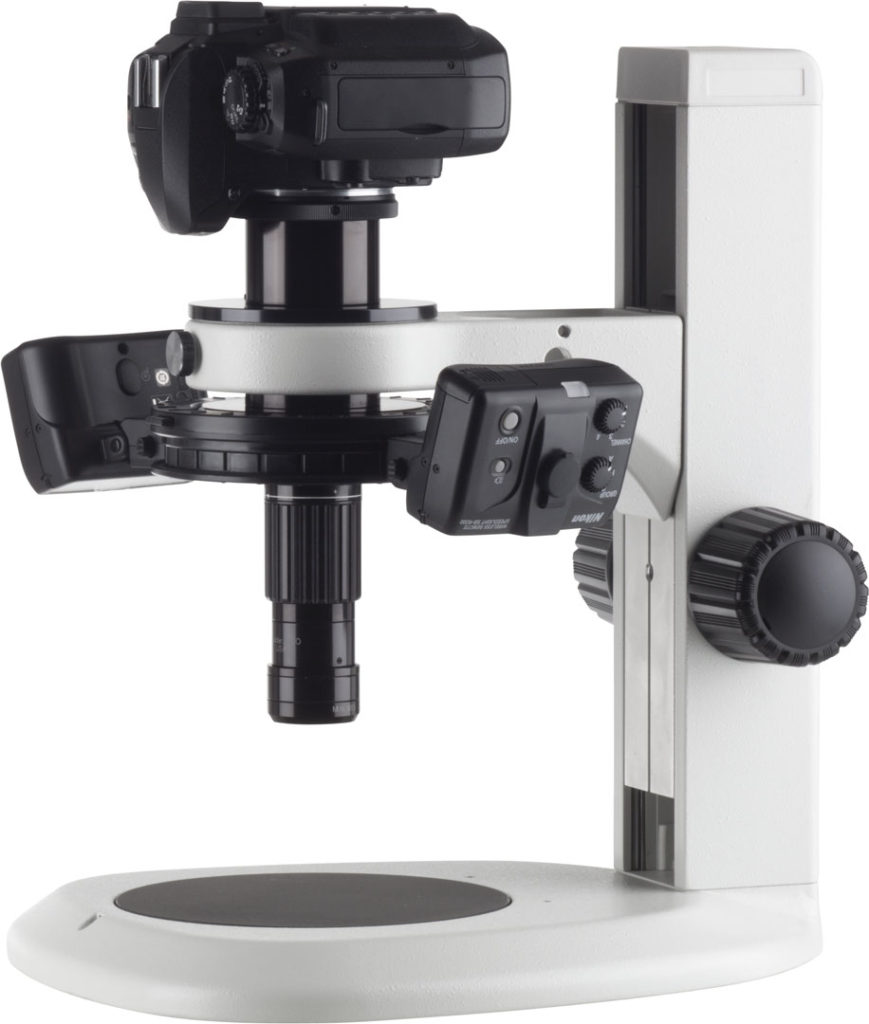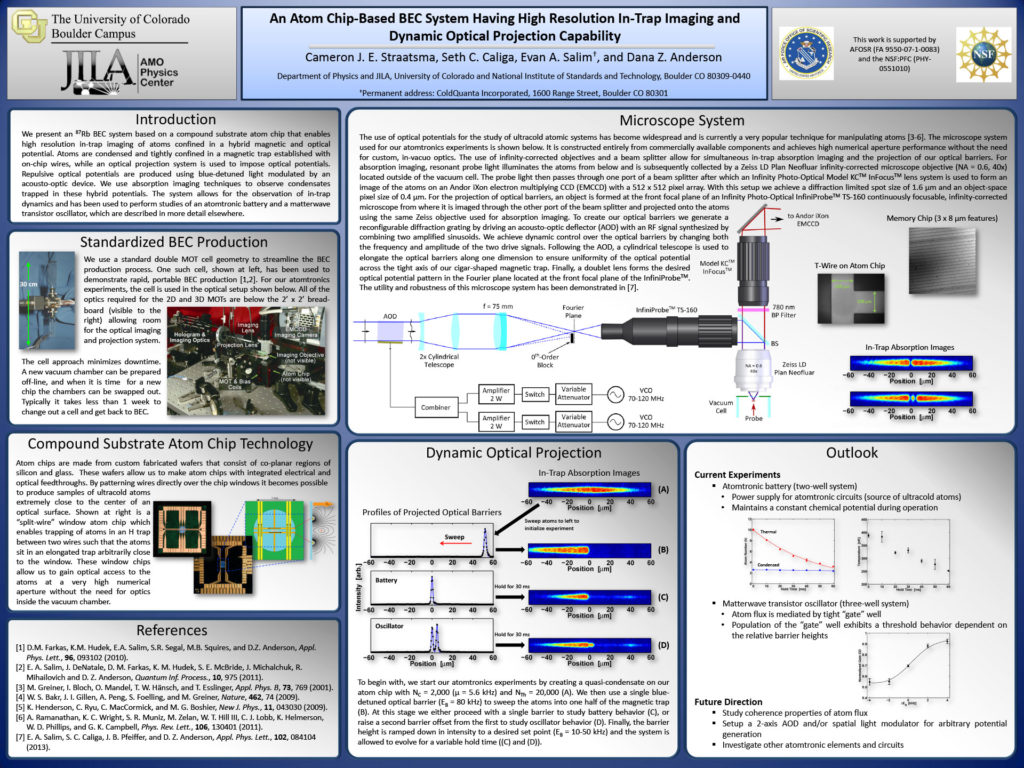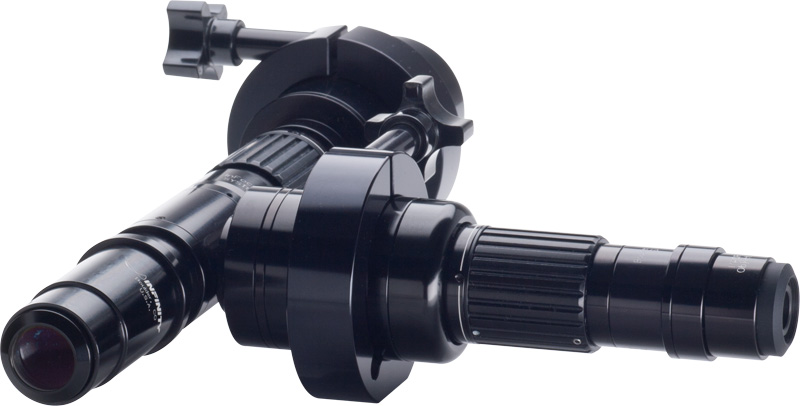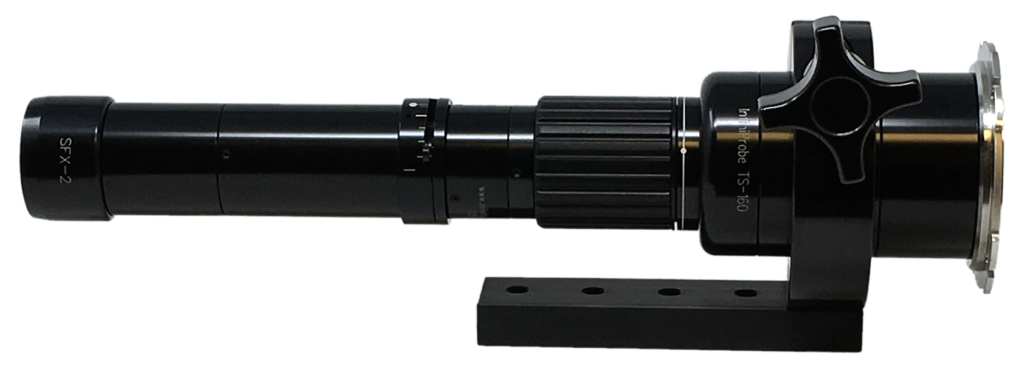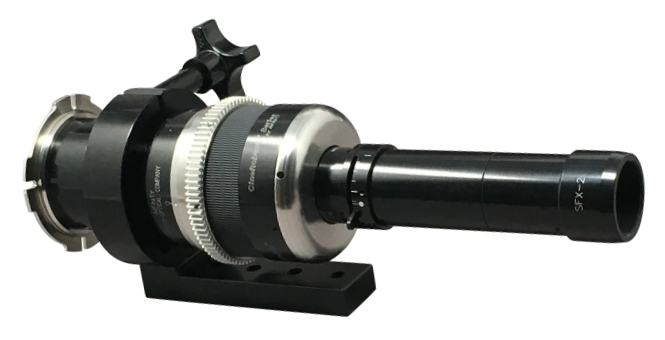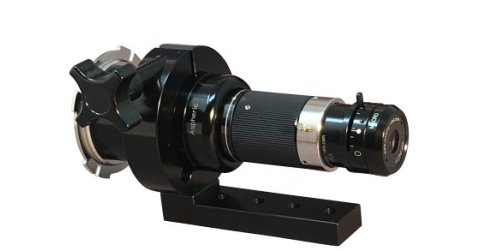INTRODUCING THE NELSONIANS ™
Hear what cinematographers have to say
Three DPs explore micro / macro cinematography with Infinity lenses.
Bill Bennett, ASC, James Mathers and Cameron Cannon photograph and shoot video with a variety of shots in order to evaluate the technology.
Click Here to View Video
InfiniProbe™ TS-160 Universal
SOMETIMES, PRODUCTS APPEAR WHICH TEND TO DEFY SIMPLE DEFINITIONS. SOMETIMES PRODUCTS APPEAR WHICH TAKE ON A MOMENTUM AND “LIFE” OF THEIR OWN AS TO EXTENDED APPLICATIONS—GOING FAR BEYOND THEIR ORIGINALLY-INTENDED PURPOSE.
THE InfiniProbe™ TS-160 IS EXACTLY THAT
… Because It Can Be Used For Everything From
This
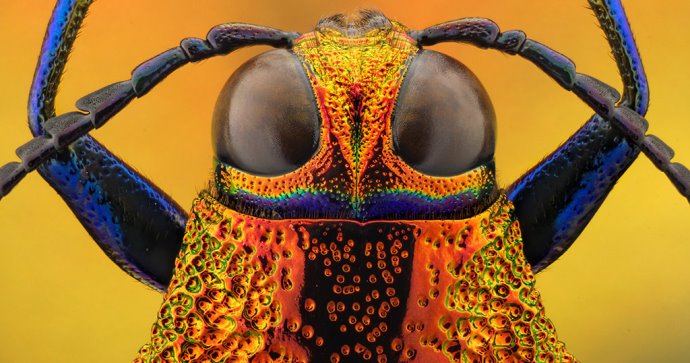
Photo Credits:
Charles Krebs
to
This
…and to This
Click to Play
Play The Guitar
Cinematographer & Magician
Rob Stiff, MagicMakers Inc.
and Everything In Between
The TS-160 in Actual Use …
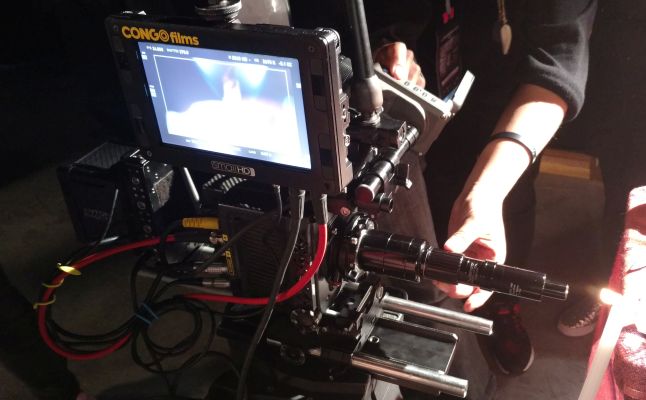
InfiniProbe TS-160
• Magnification Tables
• Instruction Manual
… AND NOW –
The ROBUSTO Versions:
– Dedicated to the needs of Cinematography
– Scroll down for details
– But FIRST let us tell you what AMAZING things even the Standard InfiniProbe TS-160 does….
The TS-160 developed as an improvement and extension of Infinity’s already successful InfiniProbe Standard C-mount line of video/inspection microscopes. Going beyond the formats and provided magnifications of the Standard line, the TS-160 was envisioned as their ultimate embodiment. And, as a Continuously-focusable Microscope (which also offers macro capabilities), the TS-160 was and still is in every way “just that.”
But, it was not “just that,” as things have turned out. Its unique characteristics were soon realized to be the fulfillment of long hoped-for aspirations of professional cinematography.
It would be easy to say that the TS-160’s cinematographic aspects were intended and considered in its design from the start. Easy to say, but untrue. In many ways, the TS-160’s use for cine came as no less a surprise to its own inventor, H Jay Margolis.
The TS-160’s potential for cine uses can be traced back to when Infinity was contacted by Hollywood film producers originally intending to use it to photograph ants for introducing a forthcoming movie. Quickly, the TS-160 began to be used for special effects by others—still as a convenient cine-microscope. Then, respected cinematographers did the unexpected: they trained the TS-160 to image distant objects. The fact that the TS-160 could always be focused to infinity was thought more a statistic than anything to consider. We were wrong and we underestimated all that it could actually do. The reported imagery obtained from using the TS-160 out to infinity came as nothing less than a revelation. The TS-160 was always considered unique—but as a microscope, after all. Now, it turned out to be even more. When “focused out,” the depth of field was almost perfectly maintained from near to infinity. This has been a long-cherished ideal of filmmakers since early days, most notably the efforts made by Gregg Toland. The TS-160 did this effortlessly.
But there were even more surprises. A single objective, originally designed to function from 0-16x demonstrated a high degree of optically-satisfactory imagery throughout every focus. And, once focused to infinity, little if any more focusing was needed. The TS-160 was a near universal imager.
So, we present to you the TS-160. How best to do that? Perhaps by keeping everything exactly in the order of chronological development, starting with the original text on its close-functioning capabilities, and then relating (and showing) footage of table-top cinematography for a commercial for a coffee-making machine! After all, it seems that the extensive imaging possiblities of the TS-160 are only realized by the possibilities of your own imagination.
100 Years Ago… This Was State-Of-The Art:
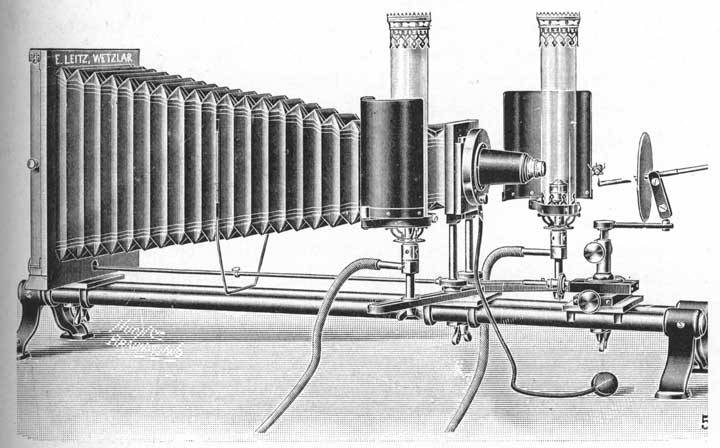
Today…The InfiniProbe TS-160 is.
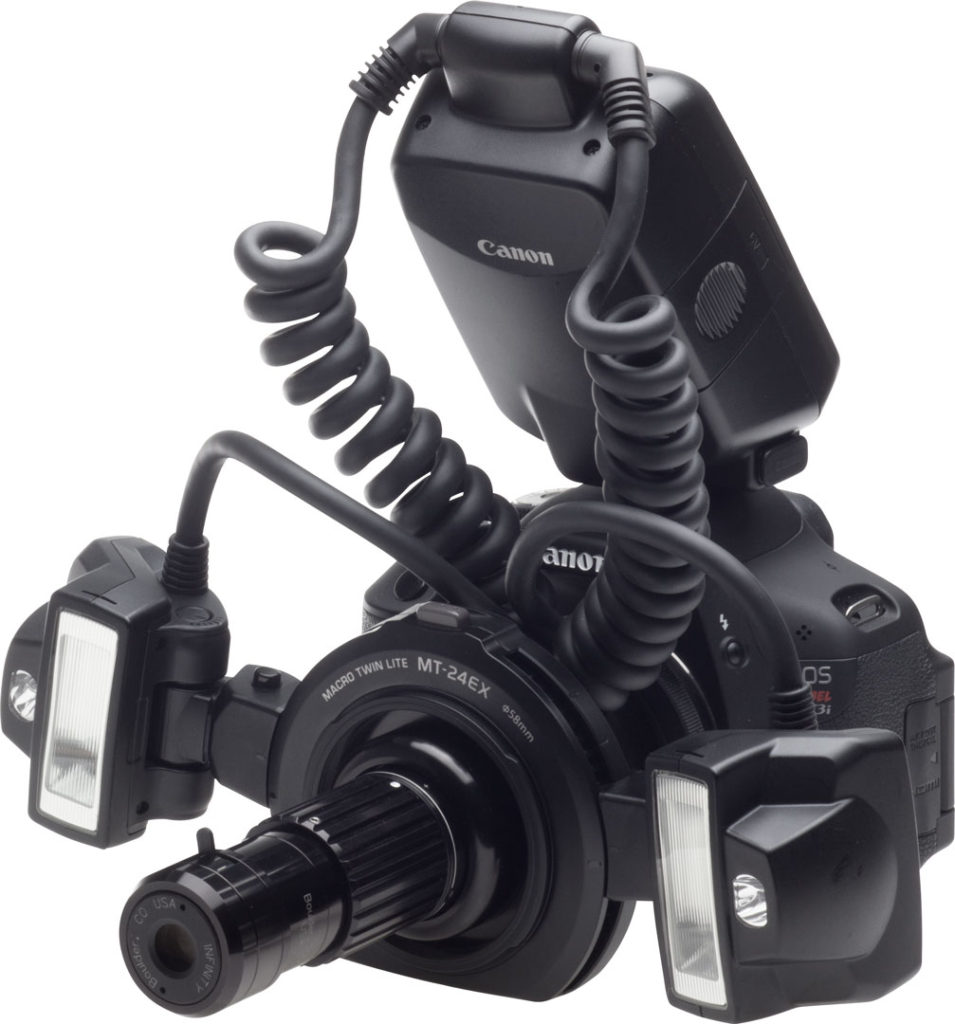
When it comes to MACRO/MICRO Imaging…
THERE’S NEVER BEEN ANYTHING LIKE THIS:
INTRODUCING THE InfiniProbe TS-160
The TS-160 is capable of resolution like this:
Incredible TS-160-captured digital images of a fly and details of its eye by Roy Larimer of DUN Inc.
The TS-160 is a radically new approach to macro/micro imaging. It has a Variable Iris, but no f/stops. It focuses internally without any changes to its outer dimensions. Its front lens is a specially-calculated microscope objective or a macro auxiliary. It ranges magnification from 0 to as much as 16x and can focus anywhere from infinity down to 18mm. Almost any camera up to and including those with 35mm sensors can be used with it. It is so easy to use that it literally sets the best image for you every time you focus. It may be a “counter-intuitive” experience even to experienced photographers. It is the InfiniProbe TS-160 from Infinity Photo-Optical Company. Quality macro/micro imaging has become simple and easy.
Recently, new accessories and the availability of a PL Arri-type mount have extended the TS- 160’s uses into advanced cinematographic capabilities. Now, a single lens can be used for imaging from micro and macro to table-top advertising, motion pictures, and wherever incredible depth of field is envisioned. Truly, the TS-160 has now advanced to the front rank of special optics. Please see Cinematography section below.
Fly’s eye by Roy Larimer using the InfiniProbe TS-160 and primary Micro HM Objective
The TS-160 System
If you are reading this, you probably use zoom microscopes or macro lenses. Until now, you could use a zoom microscope in your lab or take a macro lens into the field. It was either/or. No longer. InfiniProbe TS-160 is a small wonder that weighs as little as 295g [10.5 oz], focuses internally, and (once configured) never changes its dimensions or balance.
Camera Sensor by world-famous photographer Charles Krebs (more below)
The TS-160 is the latest in the InfiniProbe™ Series from Infinity Photo-Optical. Like all InfiniProbes, the TS-160 can focus from infinity to only millimeters from an object. Unlike any of the other InfiniProbes, TS-160 can be used directly with almost any digital or video camera—all while producing world-class images comparable to the best zoom microscopes that do not directly cover formats up to 35mm. It is a universal format system.
The TS-160 consists of a Main Body which contains a patent-pending internally focusable optical system, activated by a Focusing Ring which turns 360-degrees. Inside is a provision for 25mm diameter filters (for example, polarizers or fluorescence types). At its rear is a T24mm tube which allows access to accessories when temporarily removed—or can be exchanged with a mount for use on a stereo microscope stand. A Clamp is available so that the TS-160 can be mounted on tripods or fixtures via 1/4-20 or two “outboard” M4 taps. A Variable Iris allows contrast and aberrational control.
For further information on Cinephotomacrography, scroll down to bottom of page …
Cinephotomacrography with the TS-160
“Unbelievable!” was how naturalist and cinematographer Gunnar Olav Nilsen put it when he took his first real-time video with the TS-160. He sent us this single frame taken at 100fps in the field.
U.S. Penny (detail) taken with original TS-160 prototype by H Jay Margolis
Shell casing taken with original TS-160 prototype by H Jay Margolis
InfiniProbe TS-160 Photos by James G. Averill / TheMICROBG @ YouTube
Blue Gold
Blue Gold
Cicada
Cicada
Never Lose Sight of Your Subject
The InfiniProbe TS-160 is not a zoom lens. It is a continuously-focusable microscope. This means you can focus on any suitable object at a distance and move in to see it become a single frame at great magnification. Instead of being limited to a single working distance, you can choose whatever standoff you wish. You will never lose sight of your object as you focus closer and closer. As you focus, detail (resolution) increases and depth of field gets shallower. If you need more depth of field, just back up to get what you need. The depth of field and magnification are then balanced for best results.
The TWO Configurations in EVERY TS-160
In the secondary Macro configuration, the Focuser becomes the main optical system. When the front Macro Objective is added, it becomes a useful imager in its own right. However, this is not an actual InfiniProbe configuration. Although (in effect) only part of the total TS-160 is utilized in this way, the Macro configuration is compact and produces high depth of field. This means that if images are Z-stacked, fewer are needed. The Macro Objective is included with every TS-160 as a supplement to the kit and functions from 0-4x from infinity to 32mm at 0.08 NA.
In the true InfiniProbe configuration, the Focuser is used as a top system that “seeks” the aerial image “presented” to it by a front microscope objective (the Micro HM). This actually amounts to being a special form of compound microscope. As a result, the Micro HM objective can achieve very high aperture and high resolution. Consequently, the Micro HM fulfills the TS-160’s greatest potentials. The Micro HM Objective functions from 0-16x from infinity to 18mm at 0.16 NA or better. The InfiniProbe TS-160 is neither supplied nor sold without the Micro HM Objective being part of the original kit.
Manual Z-Stacking for Extended Depth of Field (Focus)
Since the TS-160’s internal focus adjustment “peels away” focus with amazing sensitivity, you can focus on a detail and then slowly turn the control ring to take shots through several levels. The Macro’s depth of field facilitates a minimum of shots for stacking. Of course, the Macro Objective is great for general use.
But the ultimate versatility for resolution and magnification comes from mounting the Micro HM Objective on the TS-160. That’s why we call it the primary objective for TS-160—especially because the TS-160 then operates in true InfiniProbe mode. You can convert from one to the other just by interchanging these front objectives. No tube length changes or other accessories are needed.
Which objective should you use? Well, only you can determine that. The good thing is, every InfiniProbe TS-160 comes as a kit with both front objectives included. You can always choose the configuration most suited to the work or conditions at hand. That’s why the TS-160 is truly two lenses in one.
As to software to use: We have received favorable reports from users that Zerene Stacker and Helicon Focus work well with the TS-160. Infinity, however, does not sell or supply either.
The TS-160 has a variable Iris Control. Its use is traditional with the MACRO Objective: The best position for the balance of contrast and resolution is obtained when the first “jump” in contrast is observed. Any position more or less open will either degrade the resolution or provide too much contrast. However, the setting is left to the judgment of the user.
This is not the case when the TS-160 is used with its primary objective: MICRO HM (Highest Magnification). When the Micro HM is used, the TS-160 truly functions in the InfiniProbe configuration. That is, the HM is used to provide an aerial image within the long tube which is focused upon by the top optical system. The role of the Iris is not to control exposure, depth of field or contrast. Its real function is to set the top optical system for its optimum performance, reducing aberrations to the theoretical minimum. This occurs between lines two and three on the Iris’ scale (left of center). A little “weighting” towards the third line will prove useful from time to time. But if the Iris is set at any other position when the Micro HM is used, imagery will be degraded. Of course, the Iris can be used more open or closed for creative or artistic impressions. But if the best HM Objective image is desired, the proper position of the Iris should be set between lines two and three.
InfiniProbe TS-160 Photos by World-Famous Photomicrographer Charles Krebs
More Photos taken with the TS-160 by Charles Krebs:
Use Any Camera
What makes the TS-160 universal is its format compatibility. Depending on the adapter, the TS-160 can be used with all cameras up to and including 24 x 36mm (35mm format).
Whichever camera body you choose to use with the TS-160 is your personal decision and choice—since it works on almost any camera body you care to use. You can use cameras and accessories (such as flash units) you already have by simply transferring the TS-160 to them.
The TS-160 is a revolution in imaging capability. Because, to put it simply, a single TS-160 can be equipped to replace or be an alternative to, a whole series of lenses/instruments in a lab—or in the field. And as we get input from users, its capabilities will continue to expand.
- If imaging is what you want to do, you no longer need some of the most expensive macroscopes and stereo microscopes to do it. Believe it or not, the TS-160 functionally replaces them.
- With modern DSLR or APS.-C cameras equipped with smart phone capabilities, you can now capture and transmit quality macro/micro images from on-site. Not “snapshots.” Real, lab-quality, evidence-quality images.
InfiniLight™ Adapter Tubes
Presently there are two InfiniLight Tubes with front flanges to fit Canon and Nikon flash units onto the TS-160 Main Body. The InfiniLight combines with the TS-160 to make a very compact yet efficacious macro system with self-contained flash illumination.
The InfiniLight consists of a flanged T tube part that is 12mm thick another 12mm T tube attached to it, thereby making it possible to exchange the supplied T24 tube so that the InfiniLight becomes integral to the TS-160. This also permits custom spacings (we will advise) for use with various cameras whose otherwise obstructive designs (e.g., those with thick built-in handles) to be utilized on the TS-160. As demands arise, we will consider producing other InfiniLight Tubes for makes other than Canon and Nikon.
The Universal Imaging Solution
InfiniProbe TS-160 represents a universal solution for digital and large format imaging—all in an extraordinarily compact unit. It defies comparison with the best zoom microscopes in terms of the imagery it produces. Yet, the TS-160 is far more cost-effective. With the InfiniProbe TS-160, you can take it with you. Or, you can mount it on a stand in your lab.
This poster appears on the wall at the JILA Laboratory which is now headed by Dr. Dana Z. Anderson. Recently at his invitation, Infinity’s staff visited JILA. To see Infinity’s visit to JILA—where they are now working on atomtronic transistor science, click here.
… AND NOW FOR CINEMATOGRAPHY WITH THE TS-160
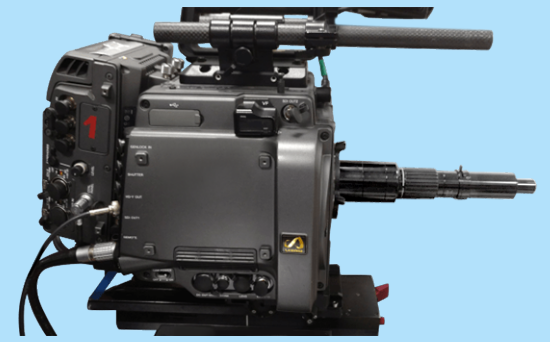
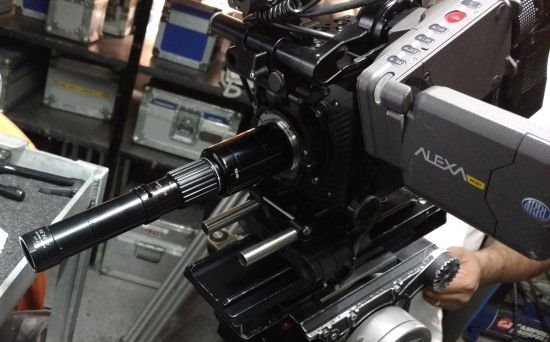
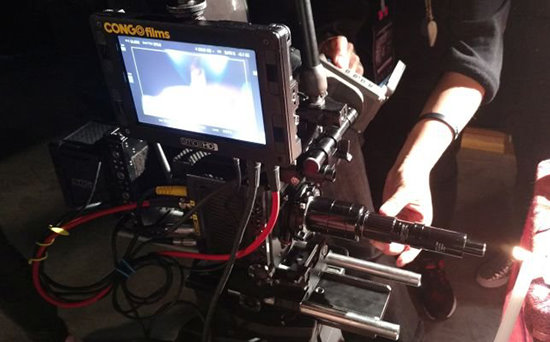
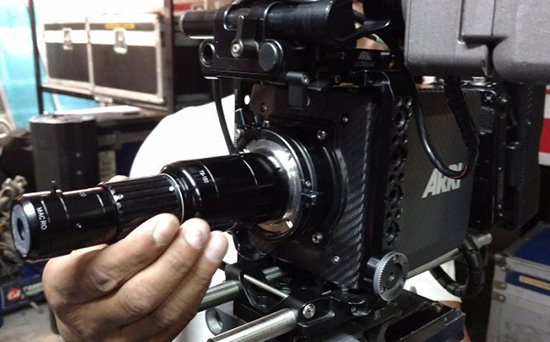
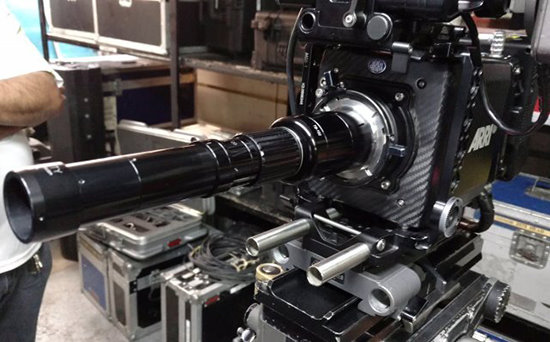
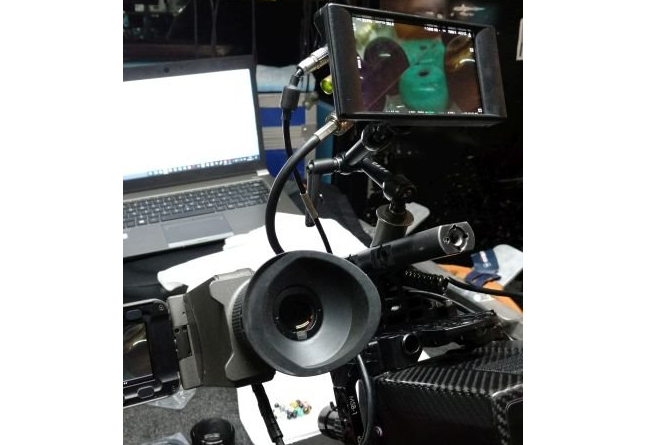
Cinematography with the TS-160
Cinematographers were quick to see that the ability of the TS-160 to focus out to infinity was of great potential, for example, for shooting commercials and the like. When “focused out” the depth of field is almost perfectly maintained to infinity.
While the TS-160 can be used from 16mm out to infinity when equipped with the Micro HM Objective, that front objective is designed for optimal imagery from 40cm and closer. To solve this, we adapted the TS-160 to use a series of front lens options comprising two SFX Lenses.
Significantly, the opposite correction of the Micro HM Objective applies when the new SFX Lenses are used on the front of the TS-160’s Main Body. This Cine Series focus out from 40cm (usefully) to infinity. They are configured on the TS-160 exactly as the Micro HM but have the advantages of better image quality at distance. SFX-1 is the standard of the series. SFX-2 has almost exactly half the magnification but twice the field of view of SFX-1. The SFX-3 is a wide angle.
Using the Cine Series Lenses is as simple as mounting them on the Main Body and focusing. In general, there is hardly any further need to focus. Then, optimal imagery and depth of field result by simply stopping the iris control to the first observed “jump” in contrast. Nearly all is in focus out to infinity.
The Cine Series Lenses accept scientific grade 25mm filters, M27 photo filters and, with an accessory adapter, M49mm photo filters.
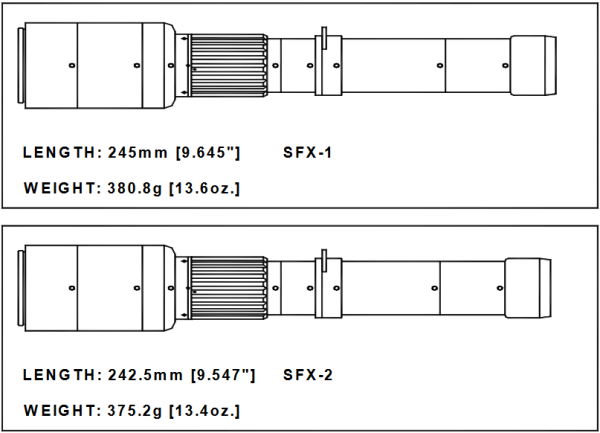
AND NOW: ROBUSTO—The TS-160 Design Brought to Optimization for Cinematography
The amazing journey of developing the TS-160 for cinematography continues. With input coming from some of the most honored cinematographers in the world, we set about bringing the TS-160 up to even their demanding OPTICAL and MECHANICAL standards. The result was what we have called ROBUSTO—Infinity’s line of optics primarily designed for cinematography.
INTRODUCING THE RESULT: ROBUSTO.
It was already noted at the beginning of this discussion (above) that once the use of the TS-160 for Cine was proposed, we set to work to provide it with objectives more suited to imaging at distances. This realization led to the development of the SFX-series consisting of three objectives: SFX-1, -2 and -3.
But one more step could be taken—and it was. By adding aspherical correction, the performance of the SFX objectives could be fully optimized. The spherical optics of the Standard TS-160 were—and still are—perfectly suited for use with the Macro and Micro HM objectives. In fact, most all sample macro and micro images shown above were taken with a Standard spherically-equipped TS-160. But the performance of the TS-160 with the SFX objectives is best realized when aspherical correction is incorporated in the Main Body. All TS-160 modules bearing the ROBUSTO designation are aspherically equipped.
But better optics for Cine also suggested incorporating better mechanics as well. Clearly, the aspherically-equipped TS-160 deserved being supported by some of the finest, most precise MECHANICS that have already been used on Infinity’s world-class K-series long-distance microscopes. A degree of unsurpassed refinement. In the process, we added high quality all-metal parts that can withstand even the most rigorous day to day usage. And, as if that were not enough, we provided TS-160 ROBUSTO with the POTENTIALS for future accessories and capabilities already planned but yet to be announced.
The TS-160 ROBUSTO handles silkily yet with authority, retaining all the unique features of the original and more. It has the literal robustness to utilize Mirror Diverters or Beamsplitters so that TWO cameras can be mounted on it. And the interchangeability to be used with ALL camera formats used in cinematography. Finally, the mark of a full ROBUSTO system is that 0.8mm pitch gearing is built-in for industry-standard follow-focus motor drives.
But we also found that some Cine applications needed more options than the original and lighter carrying weight of the full ROBUSTO. So, we created a ROBUSTO-Lite model— a “hybrid” of sorts. It is intended for MOST future ROBUSTO accessories and capabilities, yet retains compactness and light weight for macro out in the field. In fact, many will find that having both main body types will prove useful for meeting a slew of assignments.
And, to round out the ROBUSTO concept, we went full circle and added the all-metal gearing to our K1 CentriMax and K2 DistaMax long-distance microscopes— so creating three Infinity optical systems are designed for Cine uses that meet ROBUSTO criteria.
ROBUSTO comes in 2 models – Ask Us for Details
Click to Play
Credits:
Roberto Laguna Ditleff
Director / DOP
www.lagunafilms.com.br
São Paulo, Brazil
… Also sent to us by Roberto Laguna Ditleff – cinematography by Ronaldo Moreira
Click to Play
Credits:
Ronaldo Moreira
Director / DOP
www.ultimafilmes.com.br
São Paulo, Brazil
And we continue to get input from famous cinematographers.
Below are some of the actual commercials shot by Stephen McGehee:
Click to Play
Samsung 8
Stephen McGehee DOP
Click to Play
Motorola
Stephen McGehee DOP
Click to Play
Dr. Pepper
Stephen McGehee DOP
Click to Play
The Tiny Organism ExxonMobil
Stephen McGehee DOP
Rob Stiff of MAGICMAKERS INC. has explored using the TS-160 for PERSPECTIVE CHANGE. Take a Look!
Click to Play
Note – The TS-160 does not image dust. The spots you see on the video (mid-right) are actually on the rear filter of the camera!
Trees and Pinwheels
Cinematographer & Magician
Rob Stiff, MagicMakers Inc.
Click to Play
Play The Guitar
Cinematographer & Magician
Rob Stiff, MagicMakers Inc.
Click to Play
The Pool Table
Cinematographer & Magician
Rob Stiff, MagicMakers Inc.
We invite others who are using the TS-160 to submit their work for inclusion on this site.
All in the PDFs
All the instructions, data tables and pricelist are in the PDF files above. They show how to configure the TS-160 and all dimensions, etc. Contact us to learn more about how the InfiniProbe TS-160 can solve your imaging problems.
InfiniProbe, InfiniProbe TS-160, ROBUSTO and ROBUSTO-Lite are trademarks of Infinity Photo-Optical Company.

